An Interpretation: Piinpi Contemporary Australian Indigenous Fashion
Written by Melissa Lawton
Download PDF Here:
Indigenous peoples, their art and culture have been influencing Australia since first contact.People have been fascinated with the various materials, skills and aesthetics used, gathered and applied to their traditional attire from across the vast Aboriginal and Torres Strait Islander regions and communities. From the possum skinned cloaks and kangaroo capes,to the pearl and iridescent shell necklace adornments of the coastal regions.
There is an evolution of Indigenous fashion through fashion and textile designers that is no longer classified as a fringe dweller existence, but an aggressive phenomenon sweeping the fashion world both in Australia and Internationally.
The deliberate layout of the ‘Piinpi –Contemporary Australian Indigenous Fashion’ exhibition at the Rockhampton Museum of Art is designed to spotlight expressive garments,textiles and fashion accessory pieces, through a contemporary lens. The exhibition of Indigenous fashion has been intuitively developed and created by the Bendigo Art Gallery, Victoria.
This essay will look at the positioning of Indigenous fashion and textile within the fashion world and the correlations of the deliberate impacts that continue to flourish at the regional and local community levels, as I interpret them through the eyes of a First Nations Professional Photographer and Artist.
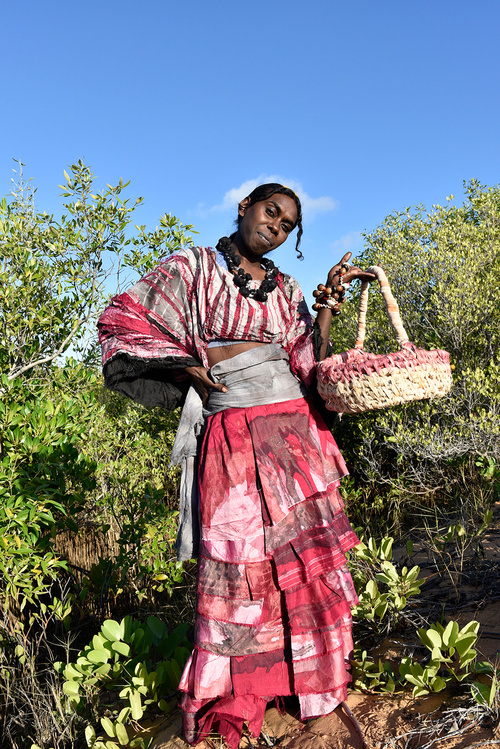
Image: Maicie Lalara, Pink dress 2018. Plant dyes, recycled sari silk. Courtesy of the artist and Anindilyakwa Arts. Photographer: Anna Reynolds
FASHIONED FROM DEPRIVATION
From the outset, the curatorial team at the Rockhampton Museum of Art have worked closely with Bendigo Art Gallery to ensure appropriate representation is given to the exhibition’s content, context and most importantly, its interpretation. This representation covers not just the wall texts and exhibition activities, but the way that each of the artists are showcased that is comparable to an Australian Fashion Week runway experience.
It is critical to step back and examine the evolution of fashion impacts on Australia to fully understand the volume of statements that an exhibition like Piinpi makes.
During a large part of Australia’s fashion history, fashion reflected a culture grafted onto an unfamiliar country; one whose Indigenous population, though excelling at body decoration, had little use for clothing(Joel, Parade – The Story of Fashion in Australia, 1984). When Indigenous people were dispossessed from their lands and herded into reserves and missions, clothing was imposed on them. The common attire of Indigenous people at that time ranged from shapeless, flimsy “mother hubbard” type dresses for women to shabby, coarse twill trousers and jackets with rough cotton oversized shirts for men. A far-removed and shocking new existence from their identity that was once nourishing, meaningful and natural.
Piinpi is an expression of the strength,diversity and succinct unwavering beauty that is everything connected to being Indigenous. Landscapes, seasons,connection, place, space, are but a fraction of the things that are culturally important to Indigenous people.
The sense of knowing who you are, where you come from and your place in relation to the spiritual augmentation of the land and its innate lores, has never wavered.
It is what keeps Indigenous people emotionally,mentally, spiritually, physically and metaphysically connected and grounded. In each piece within the Piinpi exhibition, there is an invisible signature that is distinguishable to each artist and their knowledge of land, seas, seasons and lore, lovingly crafted into beautiful contemporary fashionable art.
The Indigenous fashion and textile movement is not new; it has always been there. But its evolution has seen it become part of the process to piece together it’s place within the hemline of Australian fashion. Major national and international fashion houses, designers and trends appear to be on a quest to understand Indigenous fashion in much greater detail.
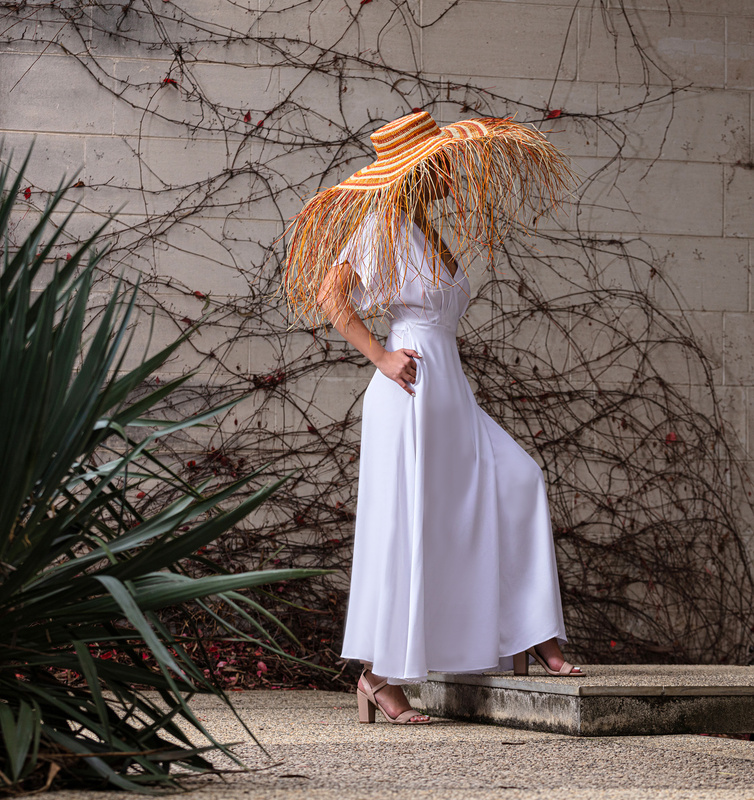
Image: MMAARA Collective x Bula’bula Arts collaboration. Hat by Margaret Malibirr of Bula’bula Arts. Dress by MAARA Collective.Model: Renee Weston Photographer: Michael Jalaru Torres.
THE FASHION EVOLUTION
What is fashion? Fashion is self-expression and Australian fashion implies undertones of a relaxed, bohemian lifestyle. It has been the casual realm of attire in the way Australians dress, that has historically received the most focus.
However, Australia is arriving at the cusp of fresh and original designs and accessory creations almost daily. This is filtering its way to the average consumer so they can create a sense of their own particular style and self-expression.
The stage premiere of Australian fashion was in 1996 when Simon Lock, Founder and Chief Executive of Order: a business-to-business online wholesale marketplace;first created and launched Australian Fashion Week with the sole purpose of engaging industry alongside consumers to celebrate designers and cultural influences. In May 2023, Australian Fashion Week will have engrossed audiences by placing onto runways fashion designers and textile artists for a vibrant and still relatively young, 27 years.
Now for the first time ever, an Indigenous Australian Designer – Denni Franciso with her label Ngali will be hosting a standalone solo show at Australian Fashion Week 2023. And just like the collaborative creatives that came together to breathe into existence the Piinpi Exhibition, Franciso has stated – ‘the Ngali runway show will be a collective effort of First Nations accessory designers,’ (The Guardian, 2023).
This holds true to the societal ways and practices of Indigenous peoples: to amplify the voice of one, isamplifying the voice of many. Deeply ingrained within amplifying voice is the multidimensional facets of Indigenous knowledge, identities, political struggles and their narratives. Most importantly are the generational presence and voices of Ancestors and Elders that have been long suppressed but rise to the surface when voices are amplified.
Fashion has always been governed by seasons and the Australian fashion industry especially, is still on its quest of identity. Yet this is not a new concept.
For many First Nations people across Australia,knowledge of the land and seasons is culturally important. While the number of seasons can vary across many First Nations groups around Australia,the Piinpi exhibition is themed around four widely recognised seasons – Dry, Wet, Regeneration and Cool (Bendigo Art Gallery).
The colour palette of Piinpi is distinctive and purposeful in its selections, hues and visual impact.From the warm inviting embers of the dry season,through to the winds and wise whispers of the cool season. Piinpi is Country in a living, breathing,beautiful landscape of a couture focused collection.
Created and expressed through the eyes, hands,stories and dreamscape of Indigenous fashion and textile artists. One would hope that your own personal experiences with fashion might invite your own self-expression, just like it did in 2022 for the Woorabinda Fashion for Wellbeing Show held at the Blackboy Outstation in Woorabinda.
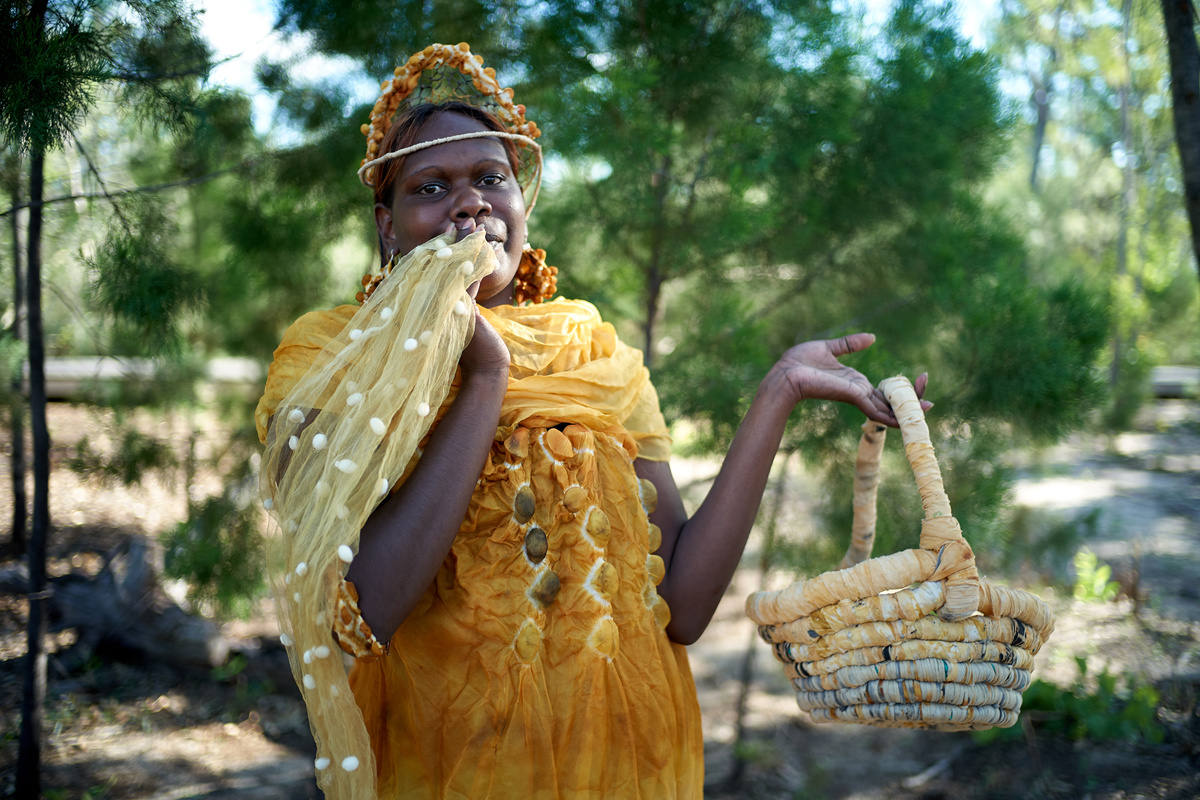
Image: Bernadette Watt, Golden dress 2019. Plant dyes, silk.Courtesy of the artist and Anindilyakwa Arts. Photographer: Ben Ward
WITHOUT LIMITS. WITHOUT CONSTRAINTS.
The rush and excitement of seeing something that has been delicately crafted,phenomenally detailed and infused with your own brand of storytelling, gracing the stages of Paris or Milan is every fashiondesigner’s dream. Piinpi has done exactly this during Paris Fashion Week in 2022 and the world instantaneously fell in love with the movement that is Indigenous textile and design. Words like ‘reclamation’,‘celebration’ and ‘a bright future’ have been applied onto various media formats, to stake a claim in what we already know is a beautiful, rich and historically prevailing culture in every sense of these words.
Indigenous people’s existence is a very long and intricately complex woven thread, that has never been broken and it is not a conversation of Indigenous people finally being seen. It is a narrative of truth-telling. Herein, is powerful expression of Piinpi. For example - ‘Bap Djandak’ (Possum Skin Cloak), 2022 created by Rodney Carter and ‘The Legacy Dress’, 2019 created by Peggy Griffiths, Delany Griffiths, Anita Churchill,Cathy Ward and Kelly-Anne Drill.
Individually, they amplify the atrocities of a past still very much lived in communities across all of Australia; together they are exceptionally crafted, beautiful individual pieces within an exhibition that is part of a collaborative dialogue. This dialogue focuses on education, preservation and encouragement of the process to discuss the reality of Australia’s historical societal fabric.
Truth telling is not intended for a soft approach to audiences. But a very necessary conversation to listen to the voices of Indigenous people that has long been absent from Australia’s foundational narratives.
There is no myth to the colonial wars, the massacres, the taking of land, separation of families, deprivation, disposition and generational and intergeneration scarring that is carried by Indigenous peoples’. It is a documented,referenced, visual and oral history that can no longer be omitted. Nor can it be a measure of comfort intended to the receiver of the conversation. It is a vital conversation of repeating in not just within Piinpi, but in discussions that are being perpetuated within an unconscious biased of people and their communities.
Piinpi is but one of a multicomplex living ecosystem of fashion and fashion statements that befriends not just our wardrobes, but our persona that consciously and unconsciously guides us to‘blend’ in or to standout. What we select to clothe our bodies is a continual walking epitaph of our own expressions, our existence and our thoughts. Many fashion designers know this and have used store fronts and runways to promote not just their chiffon or silk flowing creations, but also social issues that hold significant meaning or an interruption to a change that is afoot.
Fashion shows are proving that slacks or pants are no longer just for male forms and that a dress looks just as comfortable and beautiful gracing all body types. These non-conforming, non-binary and eco-sustainable impacts of fashion are chanting to yet another heartbeat of change sweeping across not only the world, but into our communities for open discourse.
In Piinpi we see Grace Lillian Lee, A Weave of Reflection in Pink and Orange, 2018 design there is a technique of prawn weaving, native to Torres Strait Islander culture that the artist has used to create pieces entitled Body Armour. Teaan Cowlishaw ‘Deadly Kween Jumpsuit’, 2019 from the Street Wear section of the exhibition that celebrates resistance of blak identity through the reclamation of culture, identity and phrases that Indigenous people have inherently made their own (Bendigo Art Gallery, Victoria).
Fashion is a system, a business, a discussion, a style, a statement. You may believe that your interest in fashion is limited or simply non-existent, and you may either like it or loath it.
But there is simply no denying that fashion is as much a part of our world as a sunset or a sunrise is to each day. And Piinpi is a beautiful, detailed couture fashion expression of history, love, hope and perseverance from proud descendants of our longest surviving Indigenous cultures in Australia.
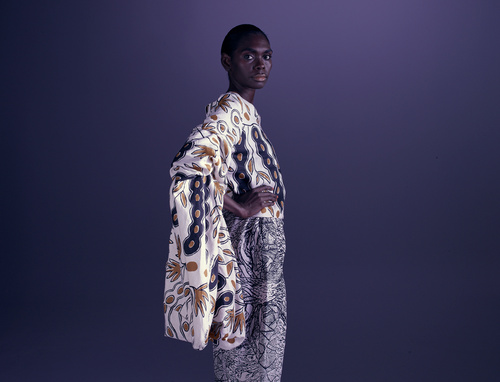
Image: Grace Rosendale, Seedpods Top and Pant 2019. Linen.Courtesy of the artist Hopevale Arts and Cultural Centre and Queensland University of Technology. Model Magnolia Maymuru. Photo: Bronwyn Kidd and Virginia Dowzer.
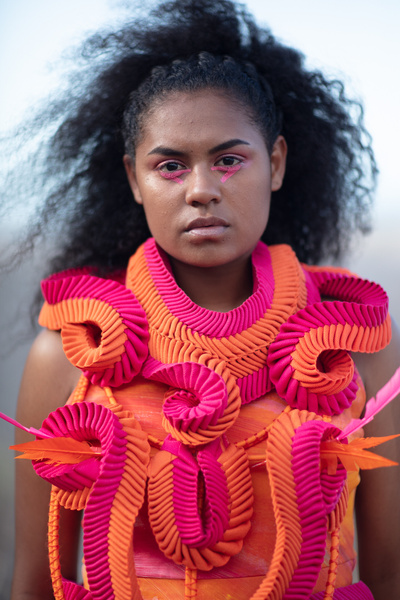
Image: Grace Lillian Lee, Body Armour – A Weave of Reflection Pink and Orange, 2018. Photography by Wade Lewis. Piinpi, © Bendigo Art Gallery
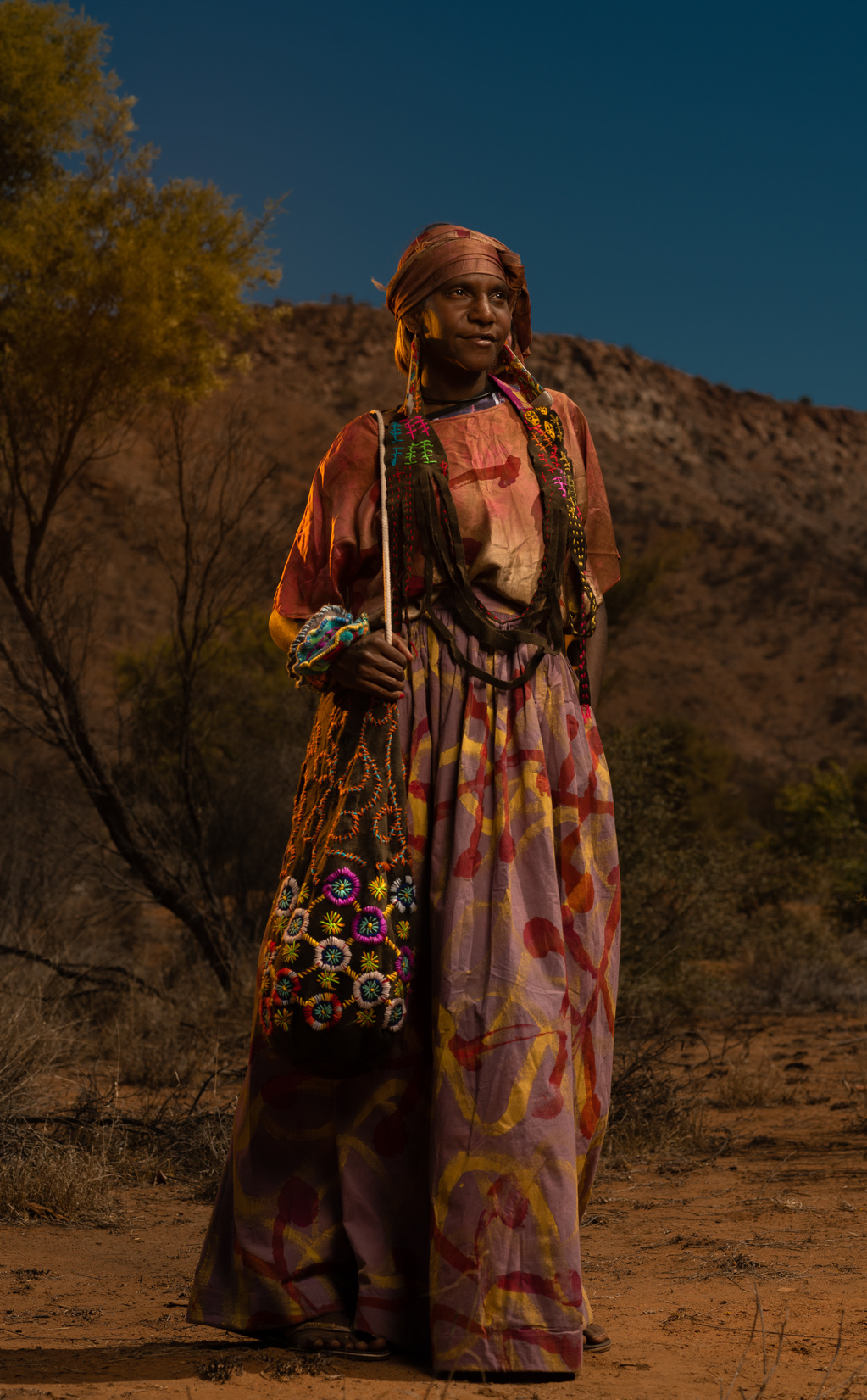
Image: Rosabella Ryder, Maurice Petrick, Take me dancing!skirt, top and earrings 2019. Silk, wool, cotton. Rhonda Sharpe,Dilly bag 2019. Bush dyed woollen blanket, cotton, wool, rope.Model: Lekita Malbunka. © Maurice Petrick, Cornelius Ebatarinja, Quincy Stevens, Dennis Brown, Dessert and Yarrenyty Arltere Artists.
Reference List
Joel, A. (1998), Parade – The Story of Fashion in Australia, Harper Collins Publishers,Sydney
Gorman, A. (2023) Australian Fashion Week 2023 Denni Francisco to be first Indigenous Designer to hold solo show – The Guardian. Accessed 22 May 2023.
Bendigo Art Gallery, Piinpi Contemporary Australian Indigenous Fashion Press Kit (2023), Victoria. Accessed 22 May 2023.